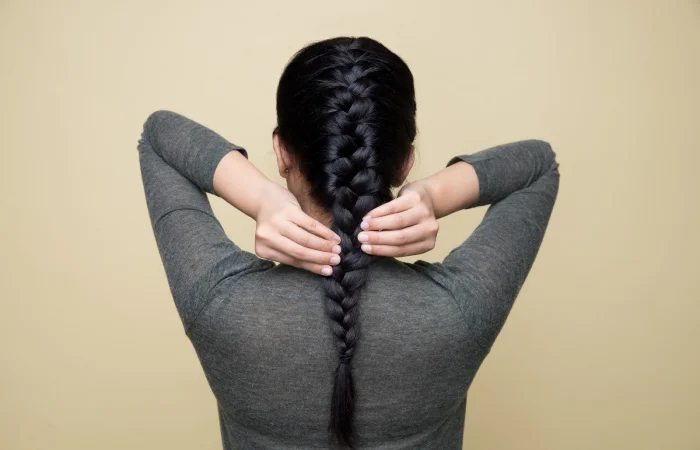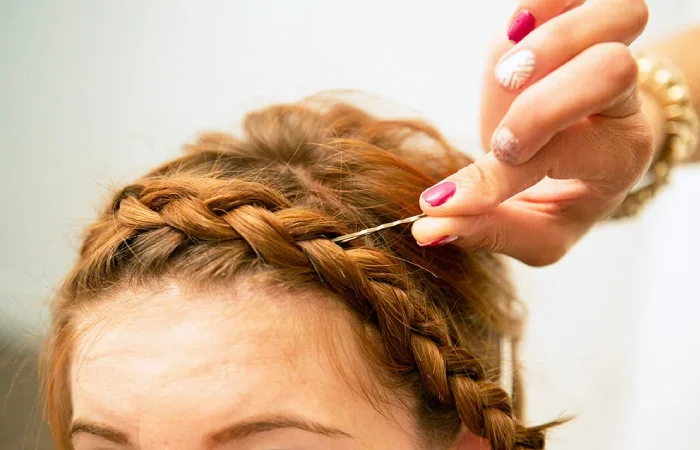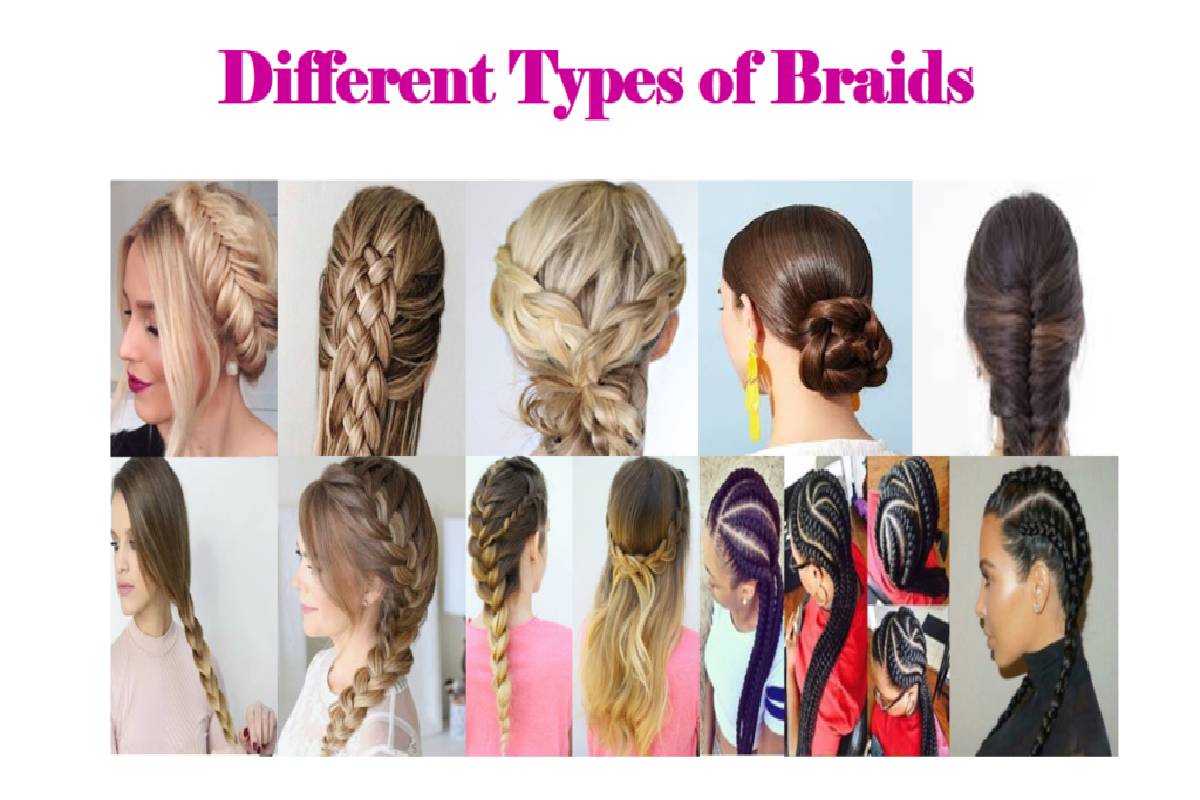It is important to know what braids are since they are a fairly traditional hairstyle, but it has different variants. In addition, braids are very common among the female public, although there is no shortage of gentlemen who wear long hair. To a large extent, the way to classify them responds to the number of strands of hair used and how they interweave.
Braids are one of the most flattering and versatile hairstyles out there, and in recent years they have seen a resurgence, becoming an indicator of going to the last.
There are as many types of braids as we can imagine and the possibilities of varying them are endless, so in this article, we collect the 10 most popular types of braids which is currently worn the most.
Also Read: What are Jeggings? – Benefits and Tips for Wearing Jeggings
Table of Contents
The most popular types of braids
Here we explain the braids that are most worn and that you can easily do at home.
1. Basic braid
- The basic braid is the one that we have probably all done when we were little.
- It is one of the simplest and the least time-consuming. It consists of separating three sections of hair and alternately crossing the outer sides above the central section.
- Even and is simple, we can vary the look a bit by starting it at different heights.
- We can begin to form it near the nape area or raise it to the crown. This modality will also serve as a basis for making other more elaborate braids.

2. Rope braid or twist
- This type of braid resembles a thick rope or a spiral since it consists of winding two previously twisted sections of hair.
- They are incredibly flattering on hair dyed in different colors. To do it, collect the hair in a tail.
- Then you have to separate two sections, twist them to one side and screw them both in the opposite direction.
- It is the simplest and fastest to do, so we can use it when we do not have time but do not want to give up carrying an original collection.
3. French braid
- The French braid is a little more elaborate than the previous ones, but it is also one of the most used.
- To do this, collect some hair from the top layer or crown and divide it into three sections.
- We follow the same process of a basic braid, only that we will add strands of hair from the excess layers to the outer sections that we intertwine.
- We can leave the braid very tight or leave it loose, giving a more romantic touch to the hairstyle.
- This type of braids is beautiful if we also add accessories or decorations.
4. Dutch braid
- The Dutch braid follows the same process as the French one but varying the interlacing.
- In this case, the sections and strands intersect below the central part and not above.
- Although it may not seem like it, by varying this detail, the result is entirely different.
- There are also different ways to wear this braid.
- One of the most popular is to create two Dutch braids at the back, thus creating the so-called boxer braids or boxer braids.
- If, instead, you prefer a more romantic or princess look, try forming it only on one side of the head.
5. Spike or Fishtail Braid
- This type of braid is the name for the texture it forms, which resembles that of a spike or a fishtail.
- At first glance, it might seem very elaborate, but it is also one of the simplest.
- To form it, we must separate the hair into two sections and intertwine small strands on one side and the other, blending them with the section on the opposite side.
- The result is a beautiful braid that also matches both formal and informal looks.
6. Milkmaid braid
- This braid is ultimately collected on the head and can add a romantic touch to our look.
- First, we must form a part in the middle and divide the hair into two sections.
- We collect each section with a rubber band from the part closest to the nape area and form a braid.
- Then it is enough to place both braids above the head like a headband and holding them with hairpins at the back of the ear on the opposite side.
- For this hairstyle, we can use any of the different ways of braiding, either by interlacing in a primary route, forming a herringbone braid, or forming a French braid.
7. Headband Braid
- This type of braid is ideal for weddings and formal celebrations and can be worn both with loose hair and combined with collected.
- We need this hairstyle to take a strand from one side of the hair, more or less above the ear, and divide it into three thin sections.
- From there, it is about forming a French braid upwards in such a way that it surrounds the head, creating a headband.
- Once we reach the other end, we finish the braid and hide the excess part behind the nape, holding with hairpins and covering with hair.
- There are many variations of this hairstyle, depending on whether we leave bangs or clear the forehead or whether we want a thicker or thinner headband.

8. Waterfall Braid
- The cascade braid is perfect if we want to wear loose hair but with a different and elegant touch.
- It is similar to the previous one, but this one forms a headband in the middle of the head and falls.
- We must separate a section of hair from the part and divide it into three parts.
- We start braiding primarily, but then we will add strands of hair as we do with the French braid.
- Follow this process through the hair and into a fall.
- The braid can surround the head in fall, or it can simply go down from the side where we have started to form it.
9. Upper Braid
- This type of braid allows us to have a clear face and is ideal if what you want is a casual updo with a different touch. It is also perfect for medium and short hair.
- This braid consists of making a small braid in the upper central part of the head, leaving the hair on the sides free and loose.
- It allows you to choose the braiding you prefer, and it can wear both with loose hair and with updos or bows.
10. Tousled Braid
- There are many ways to wear a tousled braid, but the simplest is to create a simple braid, leaving a few strands loose on the sides of the face.
- Once the braiding is done, it is enough to loosen the braid until it is loose and with a messy effect.
- Another way to do it is by braiding up to the nape of the neck and then collecting the excess hair in a ponytail.
- This hairstyle is ideal for wearing on a day-to-day basis, but if you want to give it a formal touch or wear it to celebrations, try adding small decorations such as flowers or pearls.
Also Read: How to style the prettiest long wavy hair

